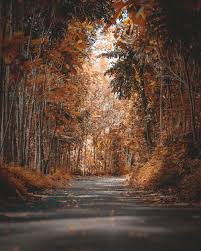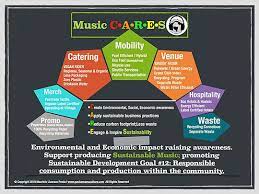The Vibrant Music Scene: A Melting Pot of Creativity and Diversity
Music scenes around the world are like microcosms of society, reflecting the cultural tapestry and creative energy of a particular place and time. From underground clubs to mainstream festivals, the music scene is where artists, fans, and industry professionals come together to celebrate their love for music.
One of the most exciting aspects of a music scene is its diversity. Different genres coexist, influence each other, and give birth to new sounds and styles. In a vibrant music scene, you can find everything from indie rock bands to electronic producers, from jazz ensembles to hip-hop artists pushing boundaries.
Collaboration is key in a thriving music scene. Musicians often work together, sharing ideas and resources to create something greater than the sum of its parts. It’s not uncommon to see artists from different backgrounds coming together to experiment and innovate, breaking down barriers in the process.
Live performances are at the heart of any music scene. Whether it’s an intimate gig at a local pub or a massive stadium show, live music brings people together in a shared experience that transcends language and culture. The energy of a live performance is unparalleled, creating moments that stay with both performers and audience long after the last note has faded.
Technology has also played a significant role in shaping modern music scenes. Social media platforms allow artists to connect directly with their fans, bypassing traditional gatekeepers and building loyal followings online. Streaming services have made it easier for listeners to discover new music from around the world, blurring geographical boundaries and expanding musical horizons.
In conclusion, the music scene is a dynamic ecosystem where creativity thrives, diversity flourishes, and connections are forged. It’s a space where passion meets talent, where innovation meets tradition, creating an ever-evolving landscape that continues to inspire and captivate us all.
Five Essential Tips for Crafting Compelling Scenes
- When setting a scene, consider the lighting to create the right atmosphere.
- Pay attention to the details in the scene to make it more immersive and realistic.
- Think about the positioning of characters and objects within the scene for better composition.
- Use different camera angles to add variety and visual interest to your scenes.
- Consider the use of sound and music to enhance the mood of the scene.
When setting a scene, consider the lighting to create the right atmosphere.
When setting a scene, it is crucial to consider the lighting as it plays a significant role in creating the right atmosphere. Lighting can evoke emotions, set the tone, and enhance the overall mood of a scene. Whether it’s soft ambient lighting for a romantic setting or harsh, dramatic lighting for a suspenseful moment, choosing the appropriate lighting can greatly impact how the audience perceives and engages with the scene. By paying attention to lighting details, storytellers can effectively convey the desired mood and immerse viewers in the world they are creating.
Pay attention to the details in the scene to make it more immersive and realistic.
Focusing on the details within a scene is crucial for enhancing its immersive and realistic quality. By paying attention to the nuances, such as the setting, lighting, sounds, and small interactions between characters, you can create a more vivid and engaging experience for your audience or readers. These subtle elements not only add depth to the scene but also help to transport individuals into the world you have crafted, making it feel authentic and alive. Embracing the details allows you to paint a more complete picture and evoke emotions that resonate with your audience, enriching their overall experience.
Think about the positioning of characters and objects within the scene for better composition.
When crafting a scene, it is crucial to consider the placement of characters and objects to enhance the overall composition. Strategic positioning can create visual interest, convey meaning, and guide the viewer’s focus. By carefully arranging elements within the scene, a sense of balance, harmony, and storytelling can be achieved. Whether it’s highlighting a key character through their placement or using objects to frame the scene, thoughtful composition adds depth and impact to the narrative being portrayed.
Use different camera angles to add variety and visual interest to your scenes.
Utilising a variety of camera angles can greatly enhance the visual appeal and overall impact of your scenes. By incorporating different perspectives, such as high angles, low angles, or close-ups, you can create a dynamic and engaging visual narrative that captivates your audience. These varying camera angles not only add depth and dimension to your scenes but also help convey emotions, highlight important details, and keep viewers visually stimulated throughout the storytelling process. Experimenting with different camera angles is a powerful tool in the filmmaker’s arsenal to elevate the storytelling experience and create a more immersive viewing journey for the audience.
Consider the use of sound and music to enhance the mood of the scene.
When crafting a scene, it is crucial to consider the use of sound and music as powerful tools to enhance the mood and atmosphere. The right choice of music can evoke emotions, set the tone, and immerse the audience in the world you are creating. Whether it’s a suspenseful moment heightened by a tense soundtrack or a romantic scene accompanied by a soft melody, sound and music can elevate the impact of a scene, making it more memorable and engaging for viewers. By carefully selecting and integrating sound elements, creators can truly bring their scenes to life and leave a lasting impression on their audience.





